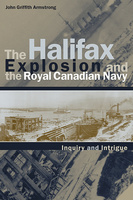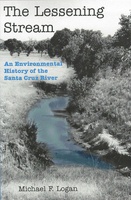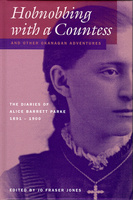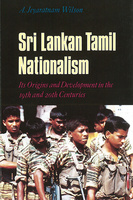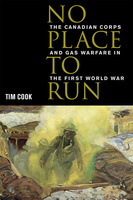The Indian Association of Alberta
A History of Political Action
Best known for its role in spearheading the protest against the infamous 1969 White Paper produced by the Department of Indian Affairs, the Indian Association of Alberta played a critical role in mobilizing First Nations peoples to political action.
The Lessening Stream
Newcomers to Tucson know the Santa Cruz River as a dry bed that can become a rampaging flood after heavy rains. Yet until the late nineteenth century, the Santa Cruz was an active watercourse that served the region's agricultural needsuntil a burgeoning industrial society began to tap the river's underground flow.
The Lessening Stream reviews the changing human use of the Santa Cruz River and its aquifer from the earliest human presence in the valley to today. Michael Logan examines the social, cultural, and political history of the Santa Cruz Valley while interpreting the implications of various cultures' impacts on the river and speculating about the future of water in the region.
Logan traces river history through three erasarchaic, modern, and postmodernto capture the human history of the river from early Native American farmers through Spanish missionaries to Anglo settlers. He shows how humans first diverted its surface flow, then learned to pump its aquifer, and today fail to fully understand the river's place in the urban environment.
By telling the story of the meandering riverfrom its origin in southern Arizona through Mexico and the Tucson Basin to its terminus in farmland near PhoenixLogan links developments throughout the river valley so that a more complete picture of the river's history emerges. He also contemplates the future of the Santa Cruz by confronting the serious problems posed by groundwater pumping in Tucson and addressing the effects of the Central Arizona Project on the river valley.
Skillfully interweaving history with hydrology, geology, archaeology, and anthropology, The Lessening Stream makes an important contribution to the environmental history of southern Arizona. It reminds us that, because water will always be the focus for human activity in the desert, we desperately need a more complete understanding of its place in our lives.
Hobnobbing with a Countess and Other Okanagan Adventures
The Diaries of Alice Barrett Parke, 1891-1900
In 1891, Alice Barrett moved from Port Dover, Ontario, to the Okanagan Valley. Few women’s diaries have survived from that time, and Barrett Parke recalls a period of profound transformation in a region newly opened to white settlement.
Place, Culture and Identity
Essays in Historical Geography in Honour of Alan R.H. Baker
This book features twelve commissioned essays recognizing Alan R.H. Baker, a leading scholar in historical geographyhighly influential and innovative contributions.
Scars of War
The Impact of Warfare on Modern China
A forceful look at the long-term social and psychological impact of warfare on modern China’s civilian population.
In/visible Sight
The Mixed-Descent Families of Southern New Zealand
Drawing on the experiences of mixed-Maori/White families, Wanhalla examines the early history of southern New Zealand, a world in which inter-racial intimacy played a formative role.
Early Childhood Care and Education in Canada
Past, Present, and Future
Larry Prochner and Nina Howe reflect the variation within the field by bringing together a multidisciplinary group of experts to address key issues in the field.
Cis dideen kat – When the Plumes Rise
The Way of the Lake Babine Nation
This book, the first to be written about the Lake Babine Nation in north-central British Columbia, examines its traditional legal order, self-identity, and their involvement in current treaty negotiations.
The Chinese in Vancouver, 1945-80
The Pursuit of Identity and Power
Wing Chung Ng captures the fascinating story of the city's Chinese in their search for identity.
Religion in the Modern American West
When Americans migrated west, they carried with them not only their hopes for better lives but their religious traditions as well. Yet the importance of religion in the forging of a western identity has seldom been examined. In this first historical overview of religion in the modern American West, Ferenc Szasz shows the important role that organized religion played in the shaping of the region from the late-nineteenth to late-twentieth century. He traces the major faiths over that time span, analyzes the distinctive response of western religious institutions to national events, and shows how western cities became homes to a variety of organized faiths that cast only faint shadows back east. While many historians have minimized the importance of religion for the region, Szasz maintains that it lies at the very heart of the western experience. From the 1890s to the 1920s, churches and synagogues created institutions such as schools and hospitals that shaped their local communities; during the Great Depression, the Latter-day Saints introduced their innovative social welfare system; and in later years, Pentecostal groups carried their traditions to the Pacific coast and Southern Baptists (among others) set out in earnest to evangelize the Far West. Beginning in the 1960s, the arrival of Asian faiths, the revitalization of evangelical Protestantism, the ferment of post-Vatican II Catholicism, the rediscovery of Native American spirituality, and the emergence of New Age sects combined to make western cities such as Los Angeles and San Francisco among the most religiously pluralistic in the world. Examining the careers of key figures in western religion, from Rabbi William Friedman to Reverend Robert H. Schuller, Szasz balances specific and general trends to weave the story of religion into a wider social and cultural context. Religion in the Modern American West calls attention to an often overlooked facet of regional history and broadens our understanding of the American experience.
Reclaiming Indigenous Voice and Vision
This inspiring volume elaborates a new inclusive vision of a global and national order and articulates new approaches for protecting, healing, and restoring long-oppressed peoples, and for respecting their cultures and languages.
Potlatch at Gitsegukla
William Beynon's 1945 Field Notebooks
This rare, first-hand, ethnographic account of a potlatch from Tsimshian scholar William Benyon reveals the wonderful complexities of the events that took place in Gitsegukla in 1945.
Islands of Truth
The Imperial Fashioning of Vancouver Island
Timely, provocative, and a vital contribution to post-colonial studies, this book questions premises underlying much of present B.C. historical writing, arguing that international literature offers more fruitful ways of framing local historical experiences.
Telling Tales
Essays in Western Women's History
Telling Tales both challenges founding myths of the region and inspires rethinking of how we tell the story of western Canadian colonization and settlement.
The Chaco Mission Frontier
Spanish missions in the New World usually pacified sedentary peoples accustomed to the agricultural mode of mission life, prompting many scholars to generalize about mission history. James Saeger now reconsiders the effectiveness of the missions by examining how Guaycuruan peoples of South America's Gran Chaco adapted to them during ...
The Canadian Department of Justice and the Completion of Confederation 1867-78
Drawing on legal records and other archival documents, Jonathan Swainger considers the growth and development of the ostensibly apolitical Department of Justice in the eleven years after the union of 1867.
The Frontier World of Edgar Dewdney
The Frontier World of Edgar Dewdney is a biography of a man who played a key role in the events which marked the political, social, and economic transformation of western Canada in the latter half of the nineteenth century.
Sri Lankan Tamil Nationalism
This book offers a concise history of the Sri Lankan Tamil nation, examining its culture and political evolution.
Against the Grain
Foresters and Politics in Nova Scotia
This book argues that forestry is a more diverse and complex activity than has been generally recognized. It also underlines the political character of the profession.
The Burden of History
Colonialism and the Frontier Myth in a Rural Canadian Community
Since the Time of the Transformers
The Ancient Heritage of the Nuu-chah-nulth, Ditidaht, and Makah
This book examines over 4000 years of culture history of the related Nuu-chah-nulth, Ditidaht, and Makah peoples on western Vancouver Island and the Olympic Peninsula.
Huron-Wendat
The Heritage of the Circle
In this book, Georges Sioui, who is himself Wendat, redeems the original name of his people and tells their centuries-old history by describing their social ideas and philosophy and the relevance of both to contemporary life.
Pacific Empires
Essays in Honour of Glyndwr Williams
A new interest in European maritime exploration was aroused with the publication of the first volume of J.C. Beaglehole's edition of The Journals of Captain James Cook in 1955. In the forty-odd years since then ...
No Place to Run
The Canadian Corps and Gas Warfare in the First World War
This book is a reevaluation of the Canadian Corps and poison gas in WWI. It examines how the Canadian Corps organized and protected its soldiers from poison gas.
Once Upon an Oldman
Special Interest Politics and the Oldman River Dam
Once Upon an Oldman is an account of the controversy that surrounded the Alberta government's construction of a dam on the Oldman River to provide water for irrigation in the southern part of the province.
Another Kind of Justice
Canadian Military Law from Confederation to Somalia
The first historical survey of Canadian military law, providing insights into military justice in Canada, the purpose of military law, and the level of legal professionalism within the Canadian military.
Colonizing Bodies
Aboriginal Health and Healing in British Columbia, 1900-50
This detailed but highly readable ethnohistory shows how a pluralistic medical system evolved among Canada’s most populous Aboriginal population.
Clearcutting the Pacific Rain Forest
Production, Science, and Regulation
This book integrates class, environmental, and political analysis to uncover the history of clearcutting in the Douglas fir forests of BC, Washington, and Oregon between 1880 and 1965.


